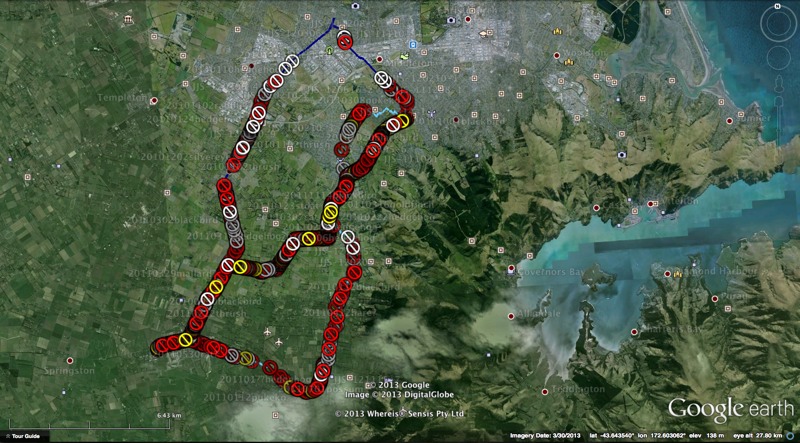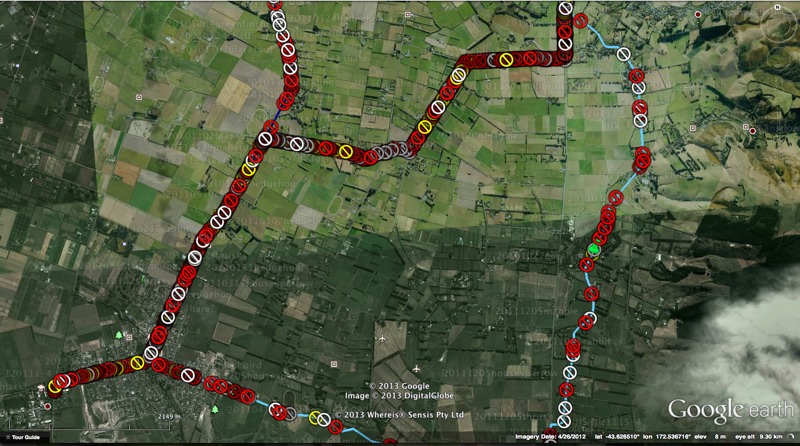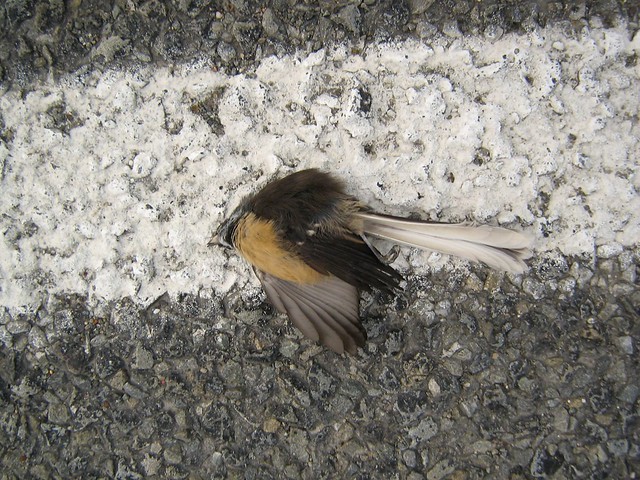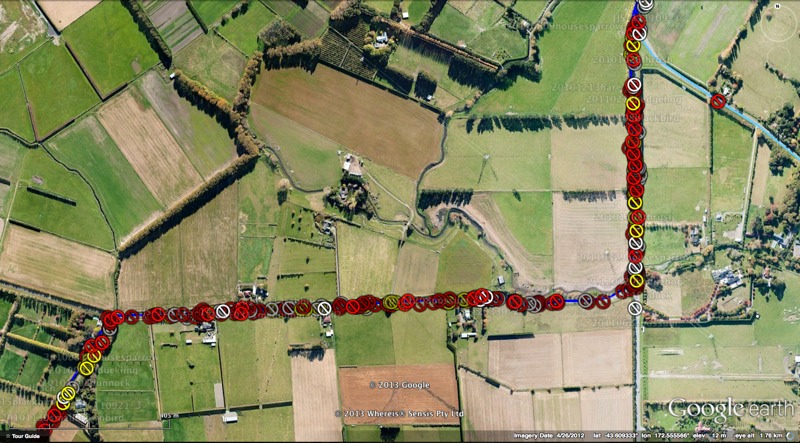RECENT ARTICLES
- CEBRA: An optimised and standardised sampling protocol for BioBlitz
- Stop it people, the plural of anecdote IS data!
- That's no pollinator, that's a flower visitor
- Add a scale to your macro photos
- What to photograph when counting the wild
- Imagine counting the wild on EVERY street in a city!
- My wild counting workflow
- A butterfly flew through
- Why iNaturalist observations without photos can be research grade
- Why you shouldn’t use a spreadsheet for data entry
- All articles ...
How many birds are killed on New Zealand roads each year?
Extrapolating a decade’s roadkill counts around Christchurch city suggests that over a million birds are likely killed on New Zealand roads each year.
written Dec 10, 2013 • by Jon Sullivan • Category: Wild Changes

I asked this question at a talk I gave at the recent EcoTas13 joint annual conference of the New Zealand and Australian Ecological Societies. I’m well placed to have a go at answering this question since I’ve been counting road kill on my daily 17 km (now 20 km) bike ride to work from southwestern Christchurch to Lincoln since 2003. For the greater Christchurch area, I have a good idea of how many birds are being killed by people driving cars. Unfortunately, the answer is a lot.
My calculations so far are of the “back of the envelope” variety but are still good enough to underscore that a considerable number of animals are being killed on New Zealand roads. Soon enough I’ll run a proper statistical analysis that models the complexities of detection probabilities and traffic volumes. In the meantime, my initial calculations may be of interest.
Pictures illustrate this better than numbers, so I’ll start with some maps of my bike route.


On average, I have noted 1,308 dead animals per 100 km per year. That is in line with bird road kill statistics reported from other parts of the world, as summarised in an article published earlier this year in the journal Avian Conservation and Ecology by Anna Calvert and colleagues (read the paper here). From lowest to highest, the equivalent reported numbers were from the Netherlands (487), USA (1,330), Sweden (1,488), Germany (1,488), England (15,349), and Bulgaria (a surprising 37,280).
Given that my road kill rates are comparable with the national statistics from these other countries, I have some confidence in extrapolating them out to all of New Zealand. This clearly must be interpreted with caution as traffic volumes, and bird populations, will vary greatly. Keep in mind that while my route is from a large city, I am a cyclist that doesn’t want to become a road kill statistic, so I purposefully avoid many of the busiest roads. Plus I will not be counting road kill birds that get removed by a scavenger before I reach them, or die away from the road in the vegetation out of view.
According to the NZ Transport Agency, there are 11,000 km of highways in New Zealand and 65,600.7 km of rural roads. I’ll conservatively leave out the 17,298.3 km of urban roads since most of these will have a 50 km/hr speed limit and so will kill less things.
(11,000 km + 65,600.7 km) / 100 * 1,308 road kill per 100 km per year = 1,002,231 dead per year
Over a million birds a year is substantially more than would have been thought from the previous work on road kill in New Zealand, by Bob Brockie and his colleagues. They drove the length of the North Island and back in each of three decades, each time counting dead animals (see their excellent article in the New Zealand Journal of Zoology from 2009). They discovered some interesting changes in animal populations, including an unexpected and unexplained large decline in hedgehogs. However, only 5.7% of the carcasses they noted were birds, which is in stark contrast to the 74% of carcasses I have seen from my bike that are birds. Dead little birds are hard to see from a car, especially when they’re lying in the grass by the road, plus they don’t last nearby as long as a possum of hedgehog carcass (hedgehog carcasses can remain on the road for over 18 months).
I’m riding through housing and open farmland so most of the birds I see dead are exotic species like blackbirds and house sparrows, descendants of birds introduced to New Zealand by European settlers. Still, less common native birds like fantails and grey warblers are individually about as likely to be killed as these exotic birds. It’s quite possible that the extra mortality caused by cars around our cities is reducing the populations of these birds. I’ll need to do more work to figure out how big an impact cars are likely having on their populations.
To put a million birds a year into perspective, it has been estimated that the oil spill from the recent Rena disaster killed 20,000 birds. So New Zealanders in cars are as deadly to NZ birds as tens of Rena oil spills every year. The oil not spilled kills many more birds.
Stoats and rats and possums and other mammalian predators still rule though. Landcare Research ecologist John Innes has done a back-of-the-envelope calculation to estimate that about 26,628,940 eggs or chicks of native birds are lost each year due to mammalian predators in NZ forests. Still, around the periphery of our cities, a fair number of the birds that are lucky enough to fledge from nests that escape predation are then hit by cars.
It’s all something to think about next time you get in your car to drive to work.

